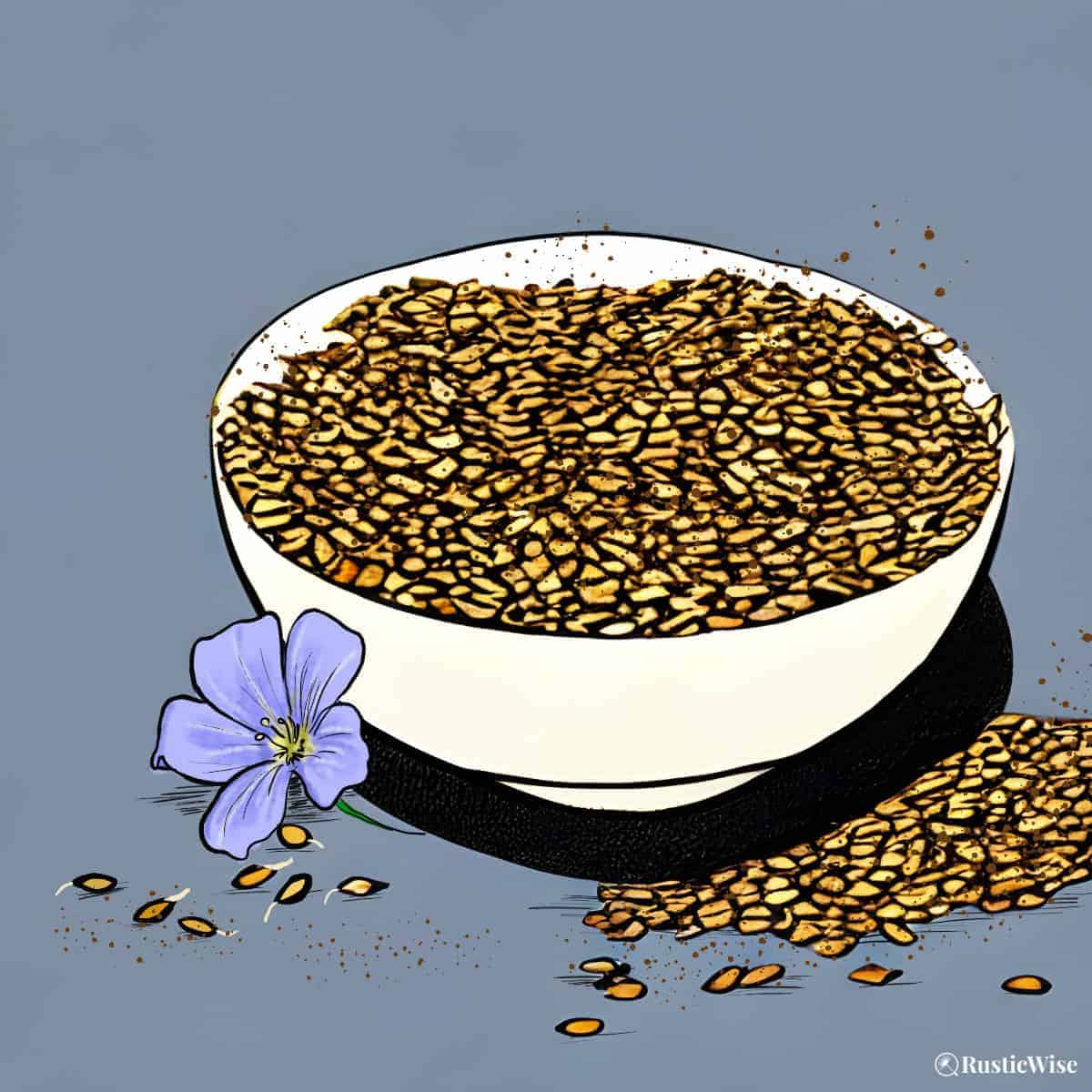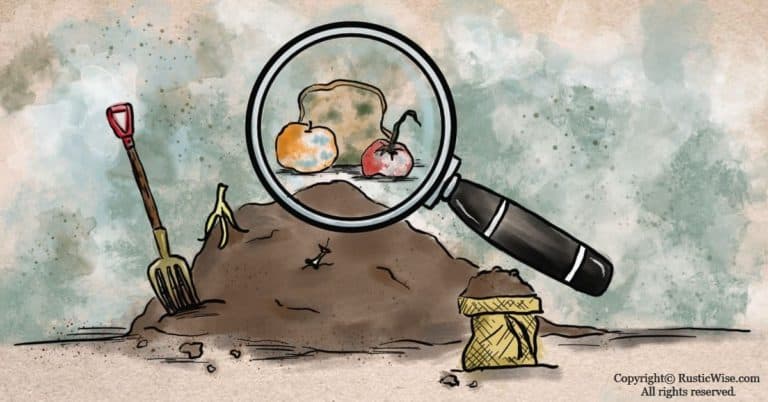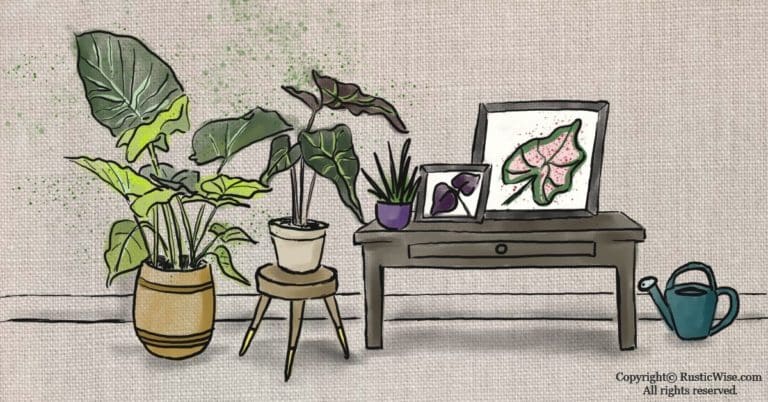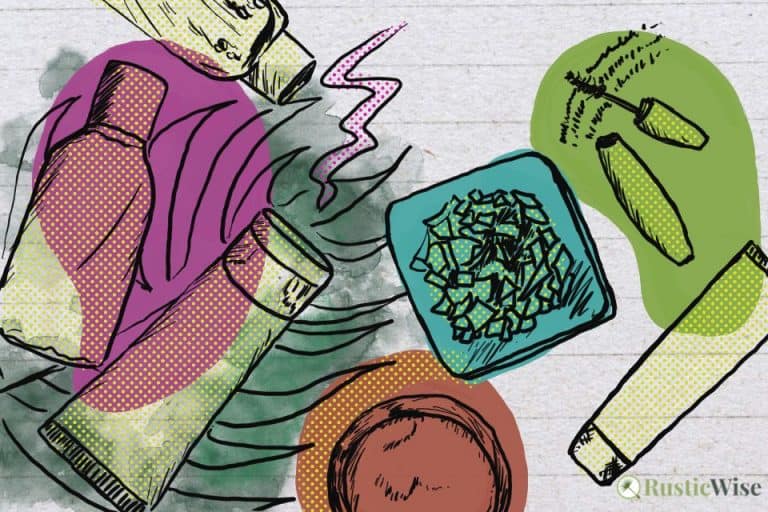How To Sprout Flax Seeds Without Making a Gooey Mess
If you’ve grown other sprouts in a mason jar with success, you might be surprised to discover that flax seed sprouts don’t grow well in a jar at all. (In fact, you can put that sprouting jar away for now altogether!) The reason flaxseed is more difficult to sprout is that it’s a mucilaginous seed, meaning it turns gooey when in contact with water.
So, if you want to know how to sprout flax seeds without having a gelatinous mess, we’ll show you how. All you’ll need is a shallow dish, preferably an unglazed terracotta dish, clean water and a mister, and a bit of patience. Your fresh sprouts are ready to eat between Days 4 and 7.
Packed with healthy omega-3 fatty acids, iron, protein, and dietary fiber, these tiny brown seeds are something you’ll want to add to your diet. Luckily, sprouting is simple, quick, and doesn’t take much space. So gather a few supplies and let’s take a look at how to grow your own fresh greens.
A closer look at flaxseed (aka linseed)
The flaxseed plant (Linum usitatissimum), also called linseed, or common flax, is a flowering annual plant with light blue flowers. Both the plant and the highly coveted seeds have a wide range of uses.
The fibers from the flax plant are spun into thread, which is then woven to produce linen. The seeds also produce linseed oil, which is used to produce linoleum flooring.
The edible light brown seeds are packed with nutrients. The seeds are used as a health food. (You’ll find ground flax in the health section of most grocery stores). Ancient Greeks and Romans also consumed this superfood for its high fiber and omega-3 fatty acid content.¹
You can eat the seeds raw or toasted. Sprinkle flaxseed whole or ground onto cereals or smoothies, or incorporate it into bread.
And, of course, you can sprout the seeds, or grow them as microgreens.

Benefits of sprouted flaxseed
Flaxseed is a diverse plant that is highly valued for its health benefits and high nutritional content. Rich in B vitamins (Thiamin) and antioxidants, this tiny seed is packed with goodness.
- Great source of dietary fiber: Just 1 tablespoon of flaxseeds provides 10 percent of your Daily Value.²
- Omega-3 fatty acids: The oils in each seed are packed with omega-3 fatty acids. In particular, it’s a rich source of alpha-linolenic acid (ALA), an essential fatty acid which helps with heart health and helps fight inflammation in the body.
- Packed with nutrients: The ancient Greeks and Romans knew this plant and its seeds are a superfood.¹ Linseed contains many nutrients and essential amino acids, including calcium, copper, iron, manganese, thiamin (vitamin B1), magnesium, and phosphorus. It’s also a considerable source of protein. Just 1 tablespoon of flaxseed contains 4 percent DV of protein (1.9 gram).²
- Easy to digest: For those who have trouble digesting certain seeds or grains, you’ll be happy to know that sprouted grain and seeds go down easier! The sprouting process breaks down hard-to-digest seed coatings and phytic acid making the body more able to access the nutrients in sprouted flax.
- Loaded with lignans: Lignans are a type of phytoestrogen which provides numerous health benefits. Lignans have powerful antioxidant properties which may lower the risk of heart disease, and prevent some forms of cancer.³
How to sprout flax seeds
The main reason that flax cannot be sprouted in a normal glass jar is that it’s a mucilaginous seed. Simply put, each seed contains a mucilaginous component in the outer seed layer, which becomes soft and gel-like when it becomes wet. Chia seeds are also mucilaginous.
When growing flax sprouts, you won’t have to worry about the regular rinse and drain cycles you normally do when using a sprouting jar.
So instead of using a regular sprouting jar, we’ll be using a shallow dish. In particular, use an unglazed terracotta plate. (You can imagine the mess you’ll have on your hands if you try the traditional rinse and drain method in a jar!)
Terracotta is a porous clay material that absorbs water. This is an ideal material to use when sprouting gelatinous seeds as it absorbs excess moisture. You want your linseed to stay moist, but NOT overly wet.
Supplies you’ll need for growing flax
- Clean unglazed terracotta dish
- Cover (this can be a piece of cardboard, or another terracotta dish placed on top)
- Organic flaxseeds
- Water mister filled with filtered water
Note: The type of water you use to mist and water your sprouts should be drinking quality, preferably filtered water. This gives your sprouts a clean and healthy start. Clean water limits impurities from the water source and prevents harmful bacterial growth. When misting your sprouts, mist just enough so they stay moist, but not so much to make them overly wet and soggy.

Credit: RusticWise
Step-by-step instructions on sprouting flax seeds
- Sprinkle seeds: Spread about 2 to 3 tablespoons of flax seeds evenly onto a terracotta dish (depending on the size of your dish). The seeds should be spread in a thin layer. Give them a thorough misting of water.
- Cover: Cover the terracotta dish with a piece of cardboard, or another terracotta dish. The seeds need darkness now. Continue to mist every couple of hours on the first day. Sprouts should be kept at normal room temperature.
- Continue to mist: On Days 2 and 3, continue to mist twice a day, or every 12 hours.
- Harvest: Between Days 4 and 7, your sprouts are ready to harvest and enjoy. See the section below for more harvesting information.
Note: Some people don’t want to grow flaxseed sprouts but just prefer to soak the seeds before eating to make them easier to digest. If this is what you want to do, simply soak the desired amount of seed in a bowl or jar of cool water for 2 to 4 hours. Add enough water so that the seeds are just submerged. The soaked seed will absorb the water and turn gelatinous and is now ready to enjoy!
When to harvest flaxseed sprouts and harvesting tips
Most people harvest their flaxseed sometime between Days 4 and 7. How fast your sprouts grow depends on your household temperature. Growing sprouts in the winter months may be slower because of cooler indoor temperatures; summer sprouting may be quicker.
Some people prefer to harvest earlier when sprouts are smaller, while others prefer to grow them longer. If you want to grow them beyond four days, they’ll need more water. You can pour a bit of water directly from a faucet with cool water, or a bottle. Drain any excess water.
On harvesting day, remove the cover and spray one last time. Expose the sprouted seeds to sunlight for a few hours to “green” them. This helps you get more vibrant looking sprouts, and any excess water will evaporate.
How to store your sprouted seeds
Gather your sprouts from the terracotta dish and place into a ventilated storage container in the fridge. Sprouts are best when consumed within 3 to 5 days.
Tip: We keep our sprouts in yogurt containers with a few holes drilled in the sides. A bit of air circulation helps extend the shelf life of sprouts.
What do flax sprouts taste like?
If you’ve ever tasted ground flax, you’ll be familiar with its mild, earthy, and nutty flavor. The sprouted seeds share the same nutty flavor profile.
Add them to sandwiches, wraps, and salads. Use them to garnish dips, omelets, and soups. Or, add them to healthy smoothies or juices.
You can also dry your own flax sprouts, grind it into flour, and add to your favorite baked goods recipes.
Related questions
What are flax microgreens?
Similar to flax sprouts, microgreens are the young shoots of sprouted flaxseed. The difference is they are grown in soil or another growing media, and are harvested just above the soil line.
The key to growing great flax micros is to keep the soil moisture just right.
Check out how to grow flax microgreens and their health benefits.
Can you sprout flaxseed with a glass plate?
Yes, if you don’t have a terracotta dish, you can use a shallow glass Pyrex dish. Note that glass doesn’t readily absorb water like terracotta does, so you’ll need to be extra careful about over-misting or watering your sprouts. Too much moisture may lead to mold issues.
Should you eat chia seeds and flax seeds together?
Yes, you can eat chia seeds and flax seeds together. Both of these seeds are high in fiber, omega-3 fatty acids, and other important nutrients. When combined, they can provide a powerful nutritional boost to your diet. I personally add both chia seeds and ground flaxseed in my morning smoothies.
As chia seeds and flax seeds have different textures and flavors, you may want to experiment to find the right combination that works for you. Remember to consume these seeds in moderation and to drink plenty of water to avoid digestive issues. Overall, adding chia seeds and flax seeds to your diet can be a healthy and delicious way to improve your overall health and well-being.
If you have digestive issues, you may find it helpful to soak the seeds beforehand, or grinding them.
👉 If you like this post, see our Essential Sprouting Guide: How To Grow Sprouts at Home. 🌱
Would you like more timeless tips via email?
Fun tips to help you live an independent, self-sustaining lifestyle. Opt-out at any time.


References
- Britannica, flaxseed, seed and food, https://www.britannica.com/topic/linseed. Accessed May 2023.
- My Food Data (USDA), Flax Seeds, https://tools.myfooddata.com/nutrition-facts/169414/wt1/1. Accessed May 2023.
- Rodríguez-García, C., Sánchez-Quesada, C., Toledo, E., Delgado-Rodríguez, M., & Gaforio, J. J. (2019). Naturally Lignan-Rich Foods: A Dietary Tool for Health Promotion?. Molecules (Basel, Switzerland) , 24(5), 917. https://doi.org/10.3390/molecules24050917

Author: Josh Tesolin
Josh is co-founder of RusticWise. When he’s not tinkering in the garden, or fixing something around the house, you can find him working on a vast array of random side projects.









